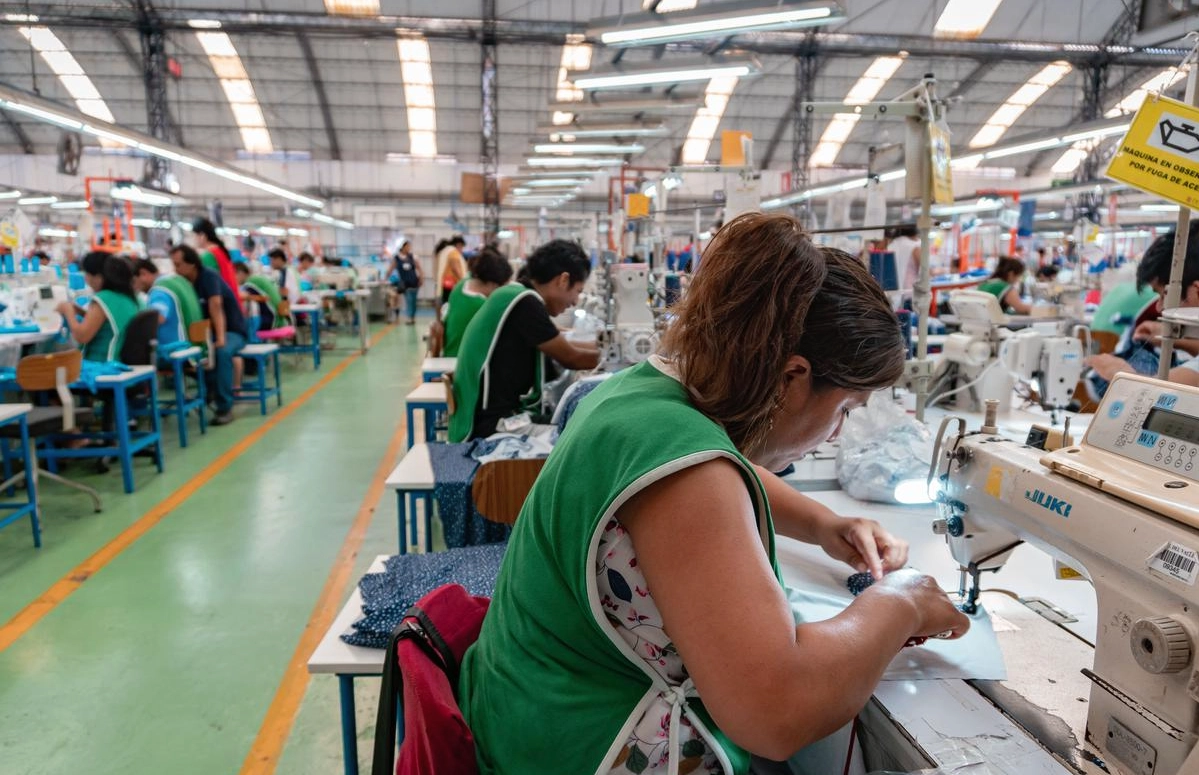Martin Wolf, a prestigious analyst at the Financial Times, recently unfolded a five-point map to situate the global economy in 2024: demographics, climate change, technological progress, know-how diffusion, and (economic) growth itself. As we will see below, it is a map that does not paint an easy 2024 for Latin America.
On the first point, much of the world — including China — is heading for fertility rates well below replacement level, at 2.1 children per woman. Not so sub-Saharan Africa, whose share of the world’s population could soar by 10 percentage points by 2060.
Climate change is a global phenomenon. But the key lies not only in the reduction of emissions that affect the entire planet, but also, to a large extent, in the investment that each country makes to adapt to the new conditions.
In the field of technology, information processing, communications, and artificial intelligence stand out. This field has numerous ramifications: from the strictly economic aspect to national security, including the creation and dissemination of knowledge and legal challenges.
As for disseminating know-how, Wolf highlights the capacity of certain developing regions to absorb, use, and expand knowledge. He refers to East, Southeast and South Asia, and predicts that this trend will continue and will have far-reaching geopolitical consequences.
Finally, Wolf points out that global economic growth during the current five-year period is the lowest since the 1990s. This is not stagnation or recession, but growth is low and uneven, negatively affecting much of the developing world.
Wolf’s trends are global, but what about Latin America?
Following the Briton’s map, let’s start with demographics. The same week that Wolf highlighted its economic relevance, The Economist pointed out the rapid decline in Latin American birth rates, and the problems it brings when combined with rising life expectancy and high rates of emigration, mostly of working-age people. Two concerns stand out: the difficulty in paying pensions and sustaining the health system. And they highlight the larger countries — Brazil, Mexico, Argentina —, but also some small ones, such as El Salvador.
Some — Brazil, Uruguay, and Costa Rica — have already begun to raise the retirement age. But many challenges remain: informal labor, school dropouts, low productivity, difficulties in attracting immigrant labor, and increasing the presence of women in the labor market.
Second, emissions associated with climate change are proportionally low in Latin America. Compared to China’s emissions (29%), the United States (11%), and India (7%), Brazil emits only 2.44% of the world’s greenhouse gases. Mexico emits 1.52% and Argentina 0.71% (2023 Report, Emissions Database for Global Atmospheric Research, European Commission). However, the consequences of climate change do not respect these national proportions.
The key to resilience lies in adaptation. CaixaBank Research published — the same week as Wolf and The Economist — a study on the impact of climate change on tourism in Spain. Its conclusions are clear: adaptation strategies are required for a future with more extreme temperatures. Climate-resistant infrastructures, tourism experiences adapted to the new preferences of tourists, or “sustainable practices that help reduce the contribution of the tourism sector to global warming”. Similarly, Latin America must study the effects of climate change on each economic sector to address the corresponding adaptation strategies.
In terms of technological progress, Latin America is lagging. In artificial intelligence, for example, it contributes 2.66% of publications in specialized journals worldwide, 3.07% of conference publications, and 1.8% of publications in repositories (Artificial Intelligence Index Report 2023, Stanford University). On the other hand, on January 23, the Financial Times reported a change of trend in Chinese investments in the region to focus on the “industries of the future”. If the European Union — through its Global Gateway program — or the United States aspire to compete with the Asian power, they will have to follow a similar path. Undoubtedly, neither will transfer know-how to Latin America that will allow it to compete or do without them, but the region can establish conditions that benefit the investor without completely removing the recipient country from access to the transferred technologies.
The previous point is linked to the dissemination of know-how throughout the world. Two important indicators in this area are patent registration and R&D investment as a percentage of GDP. According to the World Intellectual Property Indicators 2023 report, 1,823,200 patents were granted worldwide in 2022. Leading the way were China, with 798,347 (44%); the U.S., with 323,410 (18%); and Japan, with 201,420 (11%). In Latin America, the highest figures correspond to Brazil, with 23,546 (1%); Mexico, with 9,698 (0.5%); and Chile, with 2,668 (0.1%).
Concerning R&D investment, while the United States devotes 3.5% of its GDP, Japan 3.3% and China 2.4%, Brazil invests 1.15%, Argentina 0.5%, Uruguay 0.47%, and Chile and Mexico 0.3% (according to World Bank figures).
Finally, the World Bank’s Global Economic Prospects report (January 2024) forecasts very modest growth for the region this year: 1.5% for Brazil, 1.8% for Chile and Colombia, 2.5% for Peru, 2.6% for Mexico and 2.7% for Argentina.
Latin America does not start 2024 from an auspicious starting point. Urgent measures are needed to straighten out the situation. Except for demographics, performance in the other factors depends to a large extent on the relationships that Latin American countries establish with each other and with other regions. In this sense, it is worth highlighting an element mentioned by Andrés Oppenheimer: How can it be understood, in this context, that only the presidents of Argentina and Colombia spoke at the Davos Forum, an outstanding gallery for establishing those economic links that Latin America needs so much? How can it be interpreted that neither Lula nor López Obrador took the trouble to attend the Forum?
*Translated by Janaína Ruviaro da Silva from the original in Spanish.













